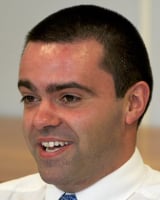The EC NGA Recommendation and its use in European regulation: some early lessons from the field
In September 2013, the European Commission (EC) released its final Recommendation on a consistent approach to non-discrimination and costing for wholesale services related to broadband access ('the Recommendation').1 National regulatory authorities (NRAs) in the European Union are required to take utmost account of this Recommendation, and an increasing number of NRAs are now doing so as they begin their latest analyses for the relevant wholesale access markets.
The Recommendation provides a series of guidelines on the costing approach to broadband access, rather than a single specification (see Figure 1). Therefore, NRAs retain a considerable degree of flexibility in approach.
Figure 1: Key concepts from the Recommendation for NRAs to consider when applying a costing approach for wholesale access services [Source: Analysys Mason, 2015]
|
Model structure |
The Recommendation is quite clear in its drive for a bottom-up LRIC+ approach. This is potentially a significant step-change for many regulators that have previously relied on top-down costing methods. |
|
Technology |
Fibre-to-the cabinet (FTTC) and fibre-to-the-home (FTTH) are the technologies cited in the Recommendation. These modern, efficient next-generation access (NGA) technologies can meet the targets of the Digital Agenda for Europe for 2020.2 Wireless technologies are not mentioned. |
|
Asset reuse |
The concept of reusable civil engineering assets (RCEA) in existing networks is introduced in the Recommendation. These assets – which can be reused for NGA deployments and will not, in practice, be replicated – include poles, as well as ducts that have spare capacity for NGA cabling. |
|
Depreciation method |
The Recommendation gives no specific guidelines on the depreciation method, except for the treatment of RCEA. The costs of RCEA that have not already been recovered through the legacy network are then treated as recoverable by the NGA networks. The Recommendation highlights the use of regulatory and financial accounting to inform this part of the costing. |
|
Migration |
The Recommendation states that, rather than model demand by migrating from a legacy copper network to an NGA network, the NGA network should be modelled to carry all of this demand. The approach emphasises of the provision of a more stable profile for the unit costs of services calculated over time. |
|
How to cost copper-based services |
The Recommendation states that a calculation of copper costs can be undertaken by making engineering design adjustments to the NGA calculation, rather than building a separate copper network calculation. |
|
Other approaches are permitted as long as the result is within a specific range |
In a separate section on implementation, the Recommendation states that if the copper local loop price falls within the range of EUR8–10 (2012 prices), Member States may continue to apply their current costing methodology to the end of 2016, and possibly beyond. |
The Recommendation does not offer views on a number of other potentially significant issues including asset sharing (for example, trenches, ducts and poles) and public subsidies for NGA deployments.
NRAs are adopting a variety of approaches to costing for broadband access and significant national differences will remain
We have examined and compared a number of recent NRA decisions that have taken the Recommendation into account in their most recent market analysis. We have observed that NRAs have adopted a wide variety of cost modelling approaches.
- The Swedish Post and Telecom Authority (PTS) in Sweden considers wireless technologies in its cost model (although it is building a new model and moving to a different regime with no price control on wholesale fibre access, but rather a replicability test on retail products).
- Several NRAs (including the Danish Business Authority (DBA) in Denmark and Institut Luxembourgeois de Régulation (ILR) in Luxembourg) retain an explicit copper calculation, rather than make adjustments to their NGA calculation.
- The Croatian Post and Electronic Communications Agency (HAKOM) is one example of an NRA that has included a separate estimate and different treatment of RCEA in its cost approach.
- Ofcom in the UK has continued to use its pre-existing, top-down approach.
The Recommendation represents a move towards harmonisation, but because it is still relatively flexible on several conceptual aspects, it will not lead to uniform regulation across the European Union – significant national differences will remain. This is in stark contrast to the more tightly defined approaches in the EC's Recommendation on Termination Rate Costing,3 or the EC Regulation on Roaming.4
Our detailed knowledge of the Recommendation, as well as 10 years of experience in access network cost modelling, means that we can support our clients in the consideration and application of this Recommendation. Contact Matthew Starling or James Allen for details.
1 European Commission, COMMISSION RECOMMENDATION C(2013) 5761 final of 11.9.2013 on consistent non-discrimination obligations and costing methodologies to promote competition and enhance the broadband investment environment. Available at http://ec.europa.eu/smart-regulation/impact/ia_carried_out/docs/ia_2013/c_2013_5761_en.pdf.
2 See https://ec.europa.eu/digital-agenda/our-targets-0.
3 European Commission, COMMISSION RECOMMENDATION C(2009) 3359 final of 07.05.2009 on the Regulatory Treatment of Fixed and Mobile Termination Rates. Available at http://ec.europa.eu/smart-regulation/impact/ia_carried_out/docs/ia_2009/c_2009_3359_en.pdf.
4 European Commission, REGULATION (EU) 531/2012 of 13.06.2012 on roaming on public mobile communications networks within the Union. Available at http://eur-lex.europa.eu/LexUriServ/LexUriServ.do?uri=OJ:L:2012:172:0010:0035:EN:PDF.
Downloads
Article (PDF)Authors


